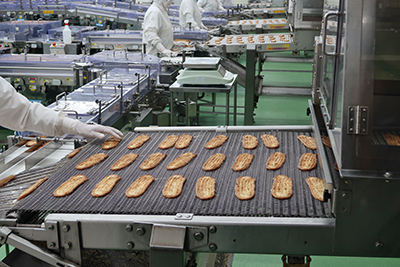
What Is Machine Vision?
Machine vision is the technology and methods used to complete imaging-based automatic inspection tasks and analysis for many applications, including food inspection.
What Is Food Inspection?
Food inspection is the process food producers use to control the quality of the food that ends up on shelves. Through this process, they eliminate bruised, unripe, or unsatisfactory food, leaving only the best food for sale to consumers.
Below, we’ll discuss the three new machine vision methods that make food inspection more accurate and efficient.
The Three New Methods
Neural Net Machine Vision Inspection
A neural net or neural network is a computing system similar to the biological neural networks that constitute animal brains. It learns in a way that is similar to the way a human brain does. In this context, neural nets help machines learn what kinds of food are acceptable and unacceptable from images in a training set. This adds human-like decision-making capabilities to the machine vision application. However, this kind of machine learning requires a significant amount of computing power. As a result, most simple vision sensors cannot support it.
When developed correctly, the neural net lets a machine identify and judge different variations in the size and color of food to inspect the food effectively. Care must be taken when training the neural net technology. Otherwise, the machine will not learn correctly, and it will be unable to differentiate good food from bad. The neural net must clearly teach the machine the difference.
An example of a very effective neural net is the one used in rice sorters. This machine is so accurate that it can detect flaws on a single grain of rice and reject the unwanted grain accordingly with a puff of air.
Near-Infrared (NIR) Machine Vision Inspection
Historically, many food and beverage applications have used RGB sensors to inspect product quality and discard those unfit to sell. However, food processors are beginning to use NIR inspection methods as well. NIR filters and lighting are required to use this method. But, after they’re in place, NIR inspections provide highly useful information on food. This is because NIR is in a spectral region that allows silicon sensors to continue working. With NIR, more data is produced, and the analytics systems can make more informed decisions on food quality.
3D Machine Vision Inspection
3D inspections allow machines to find minuscule structures on tiny surfaces that may render food unsellable. 3D inspections are so accurate because they can quickly detect the location and orientation of a product using x, y, and z measurements. To start using 3D inspection methods, you will need industrial-grade frame grabbers and software to manage the increase in data from the transition to 3D.
For example, sorting a vegetable as small as peas moving at a rate of 100,000 per minute is a lot of data to process. In all likelihood, several images of each pea will need to be taken to determine its quality and discard it if it is not satisfactory. A frame grabber could help to increase your machine’s responsiveness significantly. With a successful 3D inspection system, many food companies could increase their efficiency, accuracy, and production.
Ready to find the right camera for your machine vision project? Browse our broad selection of cameras from today’s leading manufacturers.
